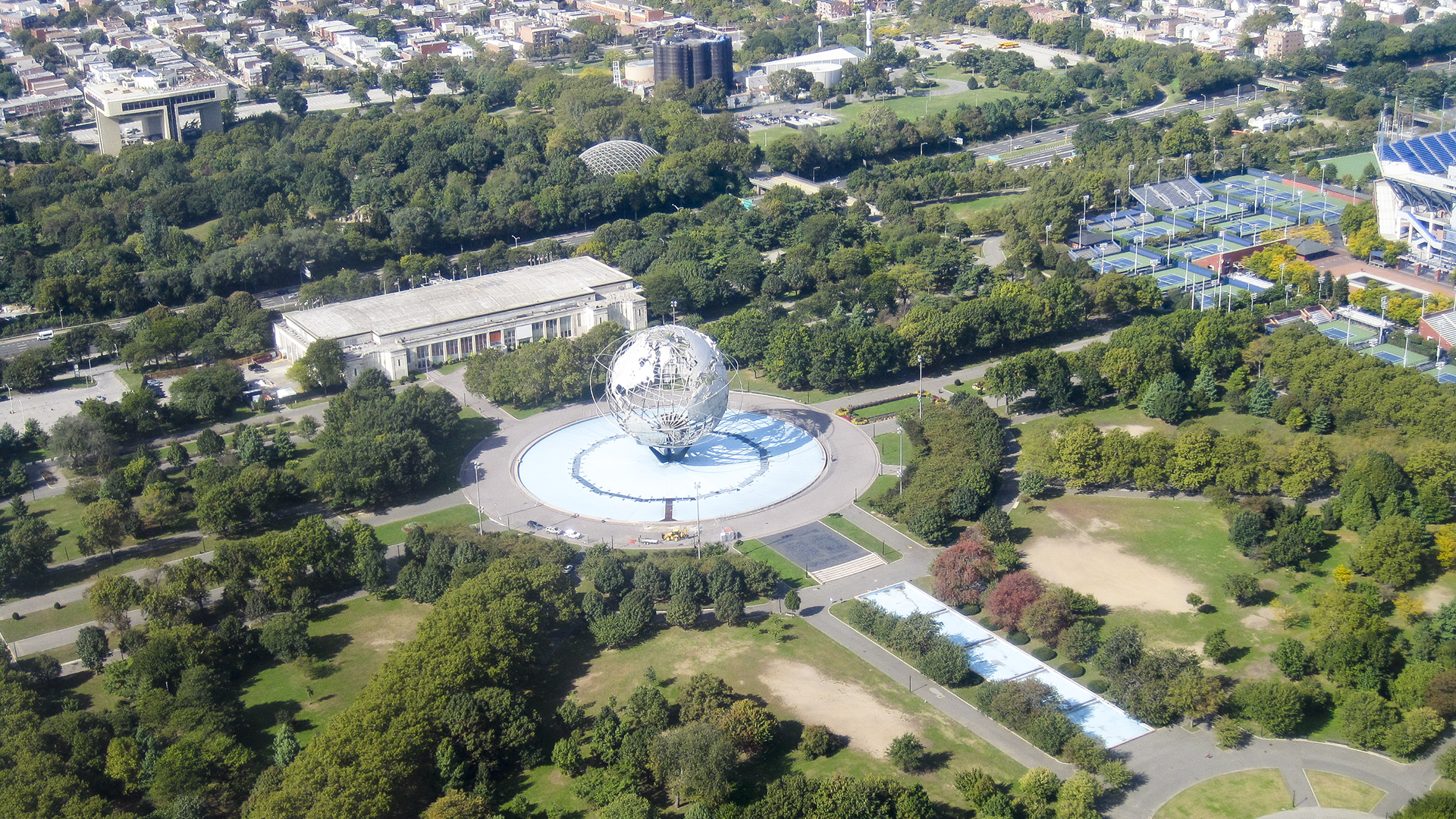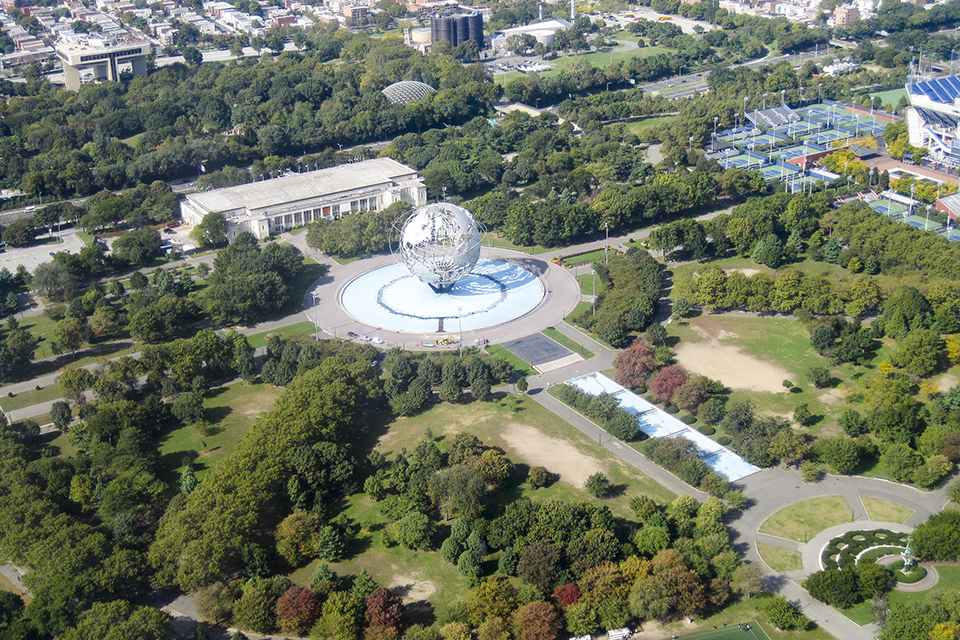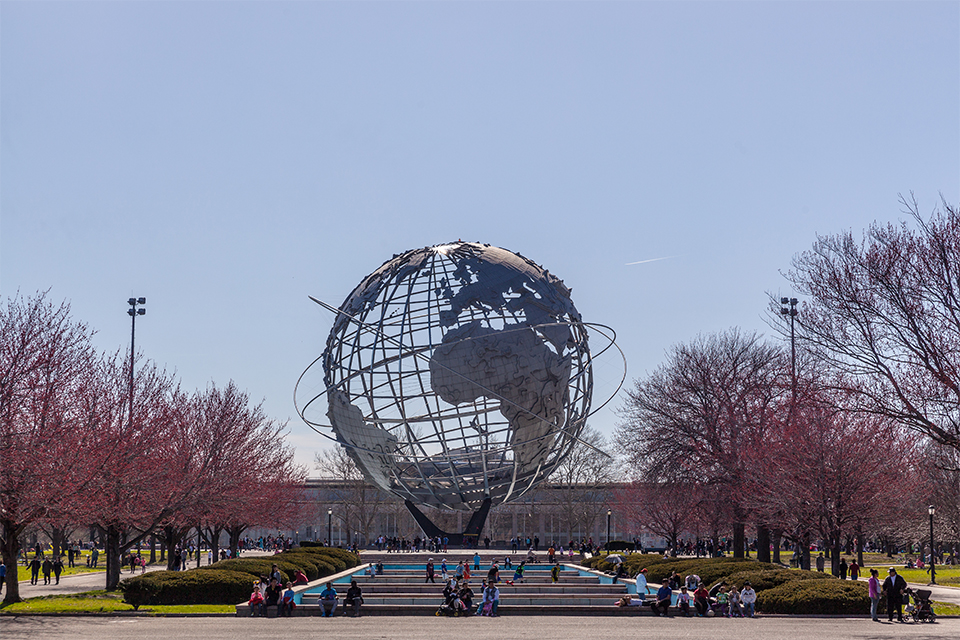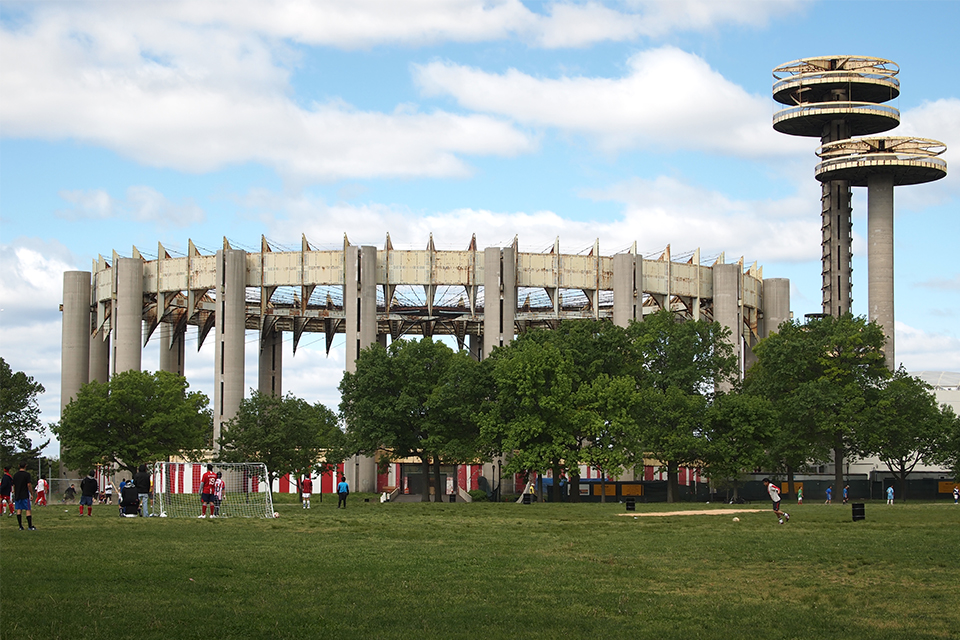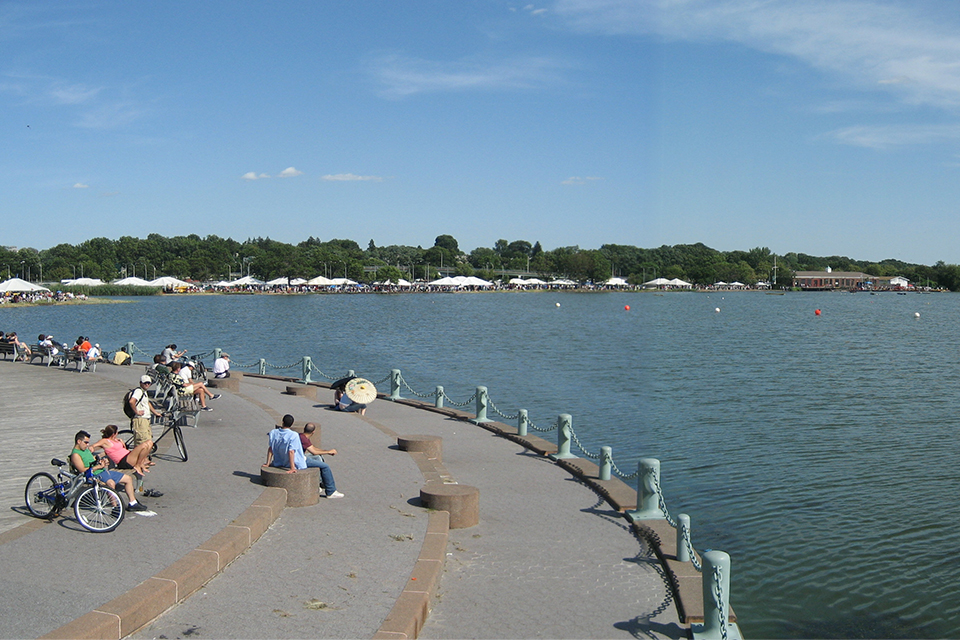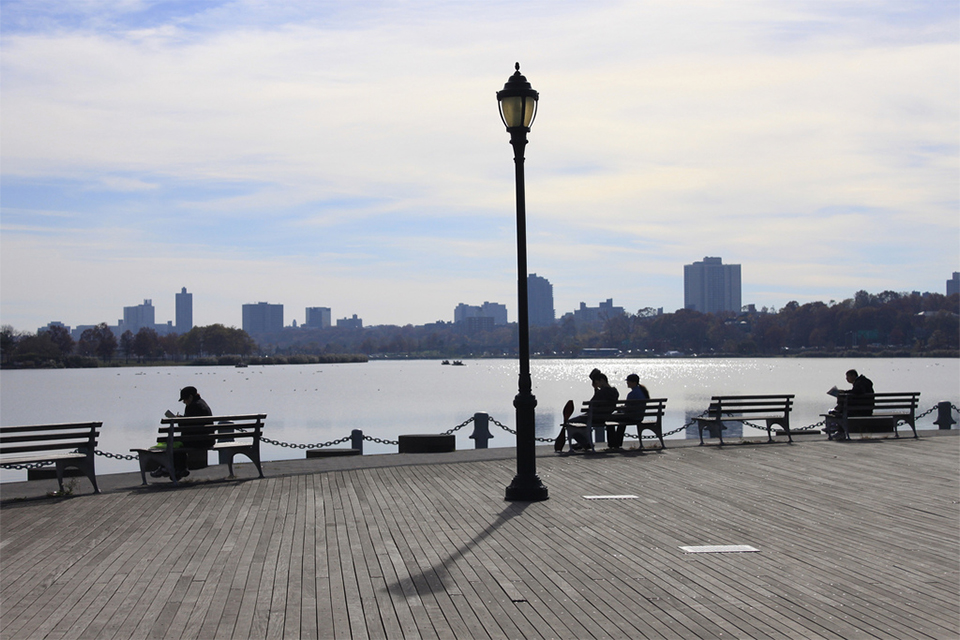Encompassing 897 acres, Queens’ largest park is best known as the site of two twentieth-century World's Fairs. Before the fairs, the Flushing Meadows marshland south of Flushing Bay was immortalized in F. Scott Fitzgerald’s The Great Gatsby as the Corona Ash Dumps. Parks Commissioner Robert Moses reclaimed the area for New York’s first World's Fair in 1939. Landscape architects Gilmore Clarke and Michael Rapuano created a monumental Beaux-Arts campus in the center of the new exposition grounds, with two large lakes – Meadow and Willow – excavated to the south. Formal allées and walks radiated outwards from a central axis, designed as a linear reflecting pool. The dump’s ashes were incorporated in the paving composite for the three expressways that cut through the park and border it on the east and west. The site is an early example of a successful environmental remediation and land reclamation project.
Background
Campanella describes Clarke and Rapuano as “master craftsmen of parks and parkways, foremost shapers of the postwar metropolis,” and the “most influential landscape architects of the twentieth century in the United States and probably the world.” For the 1964-1965 World’s Fair, Clarke and Rapuano resumed their former role as landscape architects for the exposition. While most of the park’s core design was retained, the reflecting pool was replaced with a central promenade, allowing for the construction of a number of significant new structures. Two of these iconic elements still remain: the Unisphere, a twelve-story stainless steel replica of the earth designed by Clarke, set in the heart of the Beaux-Arts landscape, and the futuristic-looking New York State Pavilion, designed by architect Philip Johnson with landscape architects Zion & Breen Associates.
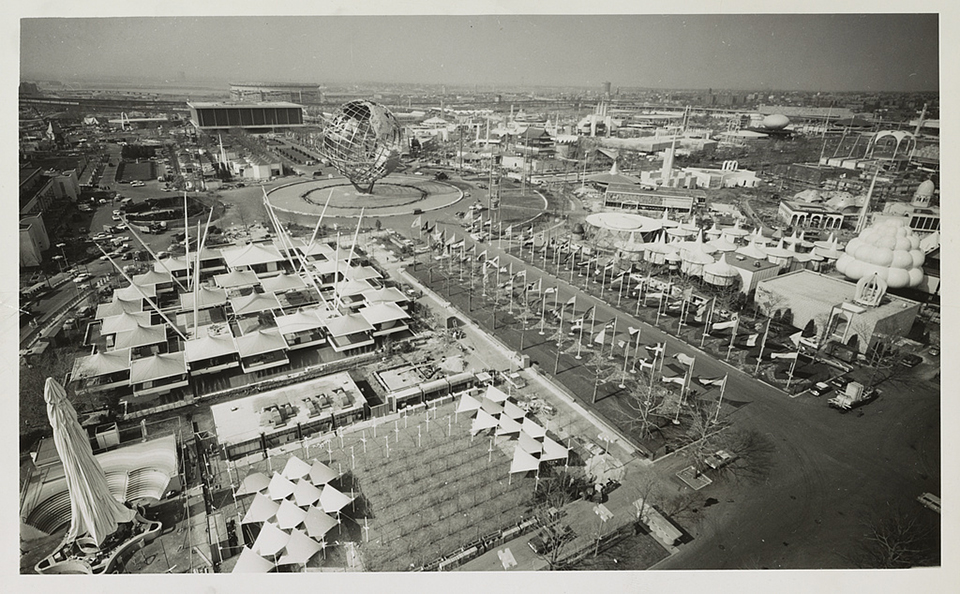 Aerial View of 1964-1965 World’s Fair, New York, N.Y, 1964-1965. Photo by Roger Higgins courtesy LOC.
Aerial View of 1964-1965 World’s Fair, New York, N.Y, 1964-1965. Photo by Roger Higgins courtesy LOC.
After the fair, the grounds were converted to a municipal park, which opened as Flushing Meadows Corona Park in 1967. The northern portion is developed with sports stadia and asphalt surface parking. The naturalistic southern section includes marshes and a 96-acre wildflower meadow, with weeping willows, sedges and rushes surrounding Willow Lake. The Flushing Bay Promenade – a 1.4-mile walk with extensive seating and planting – was completed in the 2000s. The park contains athletic fields, the Queens Zoo and Botanical Garden, museums, a marina, six playgrounds, and an amphitheater; it is an integral public open space for both the Queens community and the greater New York City area.
In 2013 New York City’s Mayor Michael Bloomberg and Major League Soccer (MLS) announced plans to build a thirteen-acre professional soccer stadium in the historic core of the park. Public parkland had already been carved out for the 46.5-acre U.S. Tennis Association’s Billie Jean King National Tennis Center (home of the U.S. Open); the 41,800-seat Citi Field baseball stadium, home to the New York Mets; the 110,000-square-foot Flushing Meadows Corona Park Pool & Rink (the largest recreation complex ever built in a city park); a zoo; an art museum; a botanical garden; and a science museum. The proposed soccer stadium would have been the only constructed sports venue located in the park’s cultural center, and would have replaced the Fountain of the Planets, a 6.5-acre basin created for the 1964-65 World’s Fair, as well as 6.5 acres of land surrounding the fountain. The site of the proposed stadium was in a strategic position, at the eastern terminus of Clarke and Rapuano’s Beaux Arts central axis, anchored at the west by Clarke’s Unisphere. Construction of the stadium would have an adverse visual and spatial impact on Clarke and Rapuano’s Beaux Arts plan and central spine and would have privatized another thirteen acres of public parkland.

Speaker Profile for Dr. Thomas J. Campanella, Shaping the American Landscape: New York City and the Region symposium at the New York Botanical Garden, New York, N.Y., 2009.
Advocacy and Engagement
To increase public consciousness of the often invisible hand of the landscape architect, TCLF featured the site in the October 2012 What’s Out There Weekend New York and What’s Out There New York City Guidebook. The following year it enrolled Flushing Meadows Corona Park in its its Landslide program as an at-risk landscape. The park was also featured in a TCLF editorial, titled “Designed for Democracy: When Public Goes Private a Park Loses its Heart,” which took up the debate over public parks and open spaces, asking, “We’ve learned to understand and value architecture and its practitioners and factor those elements into planning decisions, so shouldn’t comparable standards apply for landscape architecture?” Along with TCLF, local politicians, community and parks advocates, and even the New York Mets voiced their objections to constructing the soccer stadium in Flushing Meadows Corona Park.
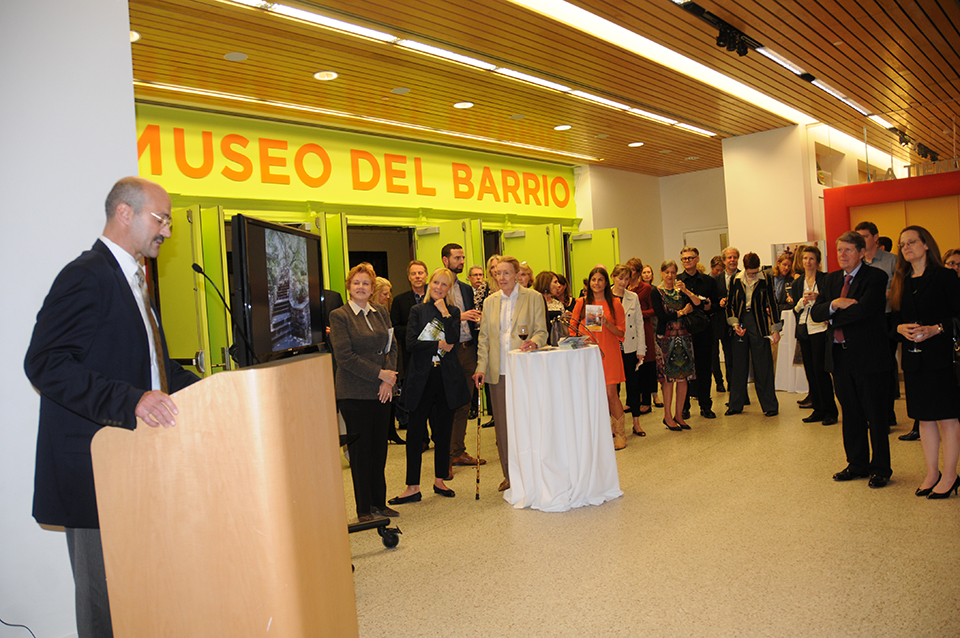 Douglas Blonsky, former President and CEO of the Central Park Conservancy, speaks at What’s Out There New York City launch reception, El Museo del Barrio, New York, N.Y., 2012. Photo courtesy The Cultural Landscape Foundation.
Douglas Blonsky, former President and CEO of the Central Park Conservancy, speaks at What’s Out There New York City launch reception, El Museo del Barrio, New York, N.Y., 2012. Photo courtesy The Cultural Landscape Foundation.
Due to this public outcry, it was announced in 2014 that the newly formed New York City F.C. soccer team would play its first three seasons at Yankee Stadium while MLS looked for an alternative site. Nearly a decade after the original plans were announced, in November 2022, New York City officials reached an agreement to build the city’s first professional soccer stadium on a waterfront section of Queens, in the Willets Point neighborhood. In the meantime, the city had engaged in a $6.8 million rehabilitation of the Fountain of the Fairs in Flushing Meadows Corona Park, which had been damaged due to flooding caused by superstorm Sandy. Undertaken by Quennell Rothschild & Partners (QRP), the work, which aims to better serve contemporary needs while respecting the World’s Fair visual and spatial organization and historic design intent, transformed the western pool (in front of the Unisphere) into an interactive and cooling “mist garden.” Future phases will turn the Center Fountain into a sunken amphitheater, and the Large Fountain into a children’s water park. Playful spray showers will reference the jets that lined the pool during the 1943 World’s Fair. New benches, lounge chairs, tables, and seat walls were added, and the massed yews that obscured views of the Reflecting Pool were replaced with grasses and low evergreens that offer a sense of enclosure without obstructing historically significant views and sightlines.
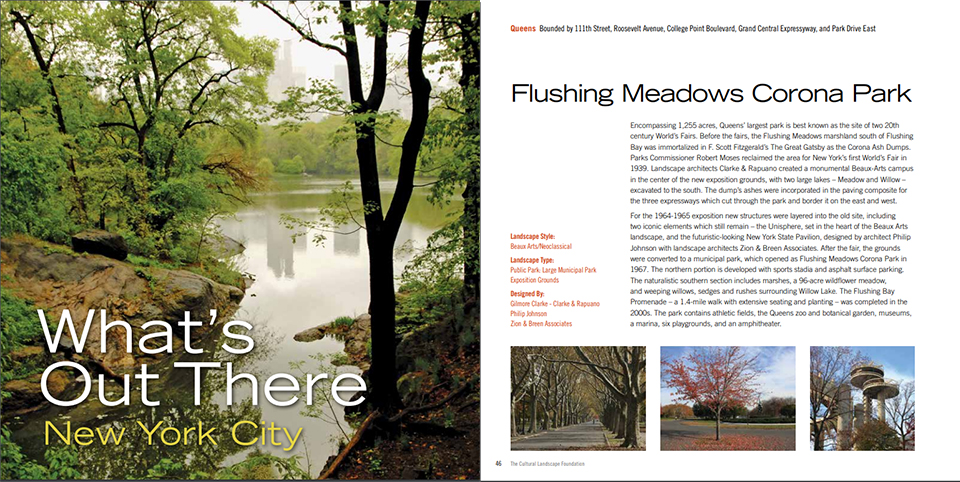 What’s Out There New York City guidebook, 2012. Image courtesy The Cultural Landscape Foundation.
What’s Out There New York City guidebook, 2012. Image courtesy The Cultural Landscape Foundation.
Over a decade since TCLF helped draw attention to this historically significant and beloved site, the former exposition grounds nested within this large municipal park continues to be stewarded in a way that is attuned to its unique and multi-layered design.
Selected Resources
“Designing Tomorrow: America’s World’s Fairs of the 1930s”
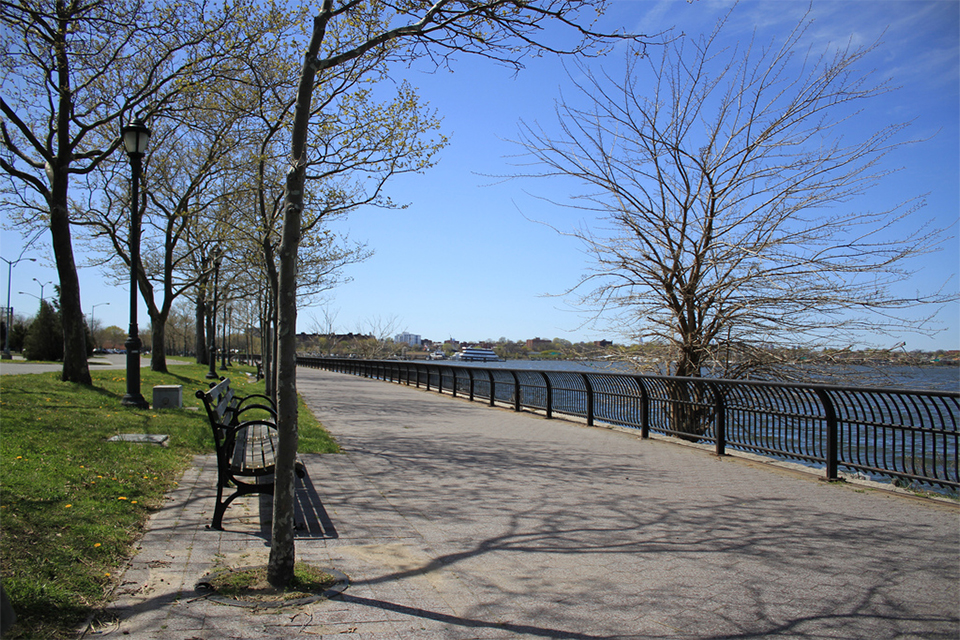
-
Flushing Meadows Corona Park, Queens, NY, 2010. Photo by Emilio Guerra.
